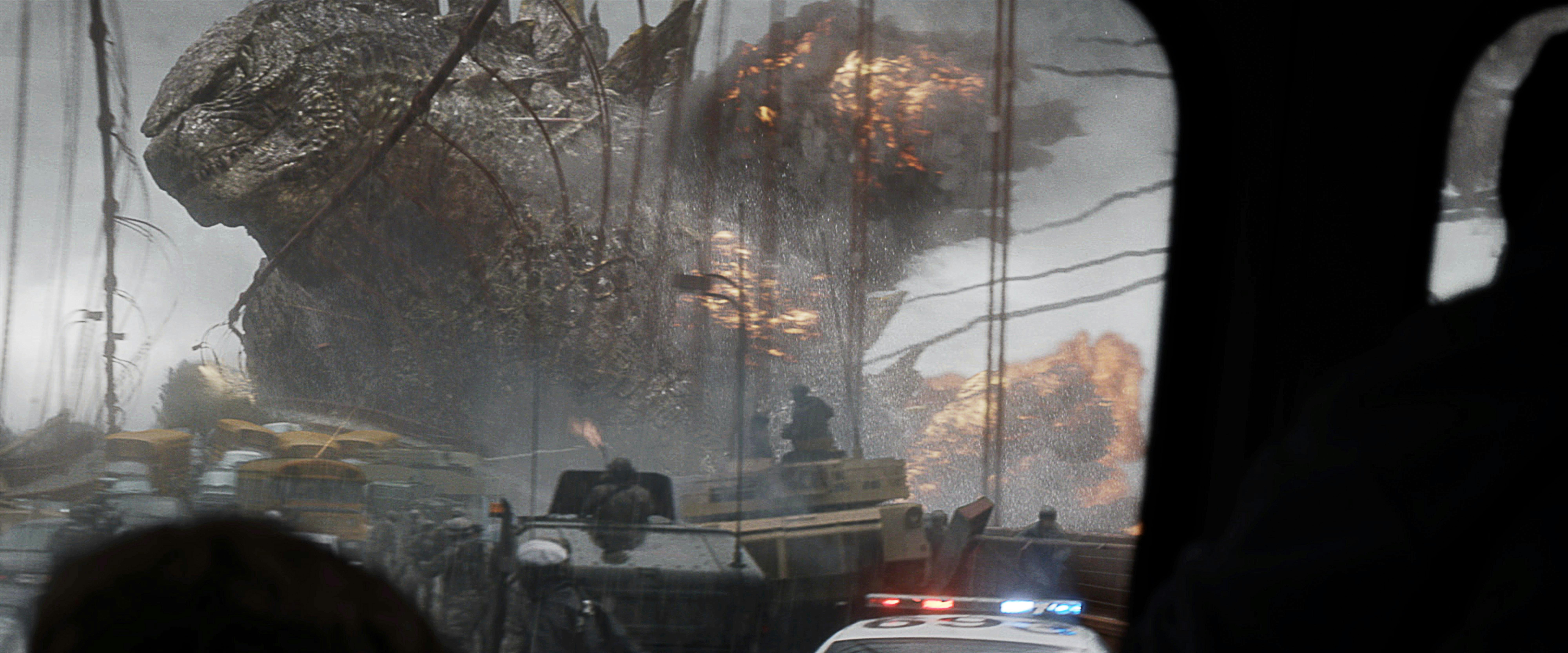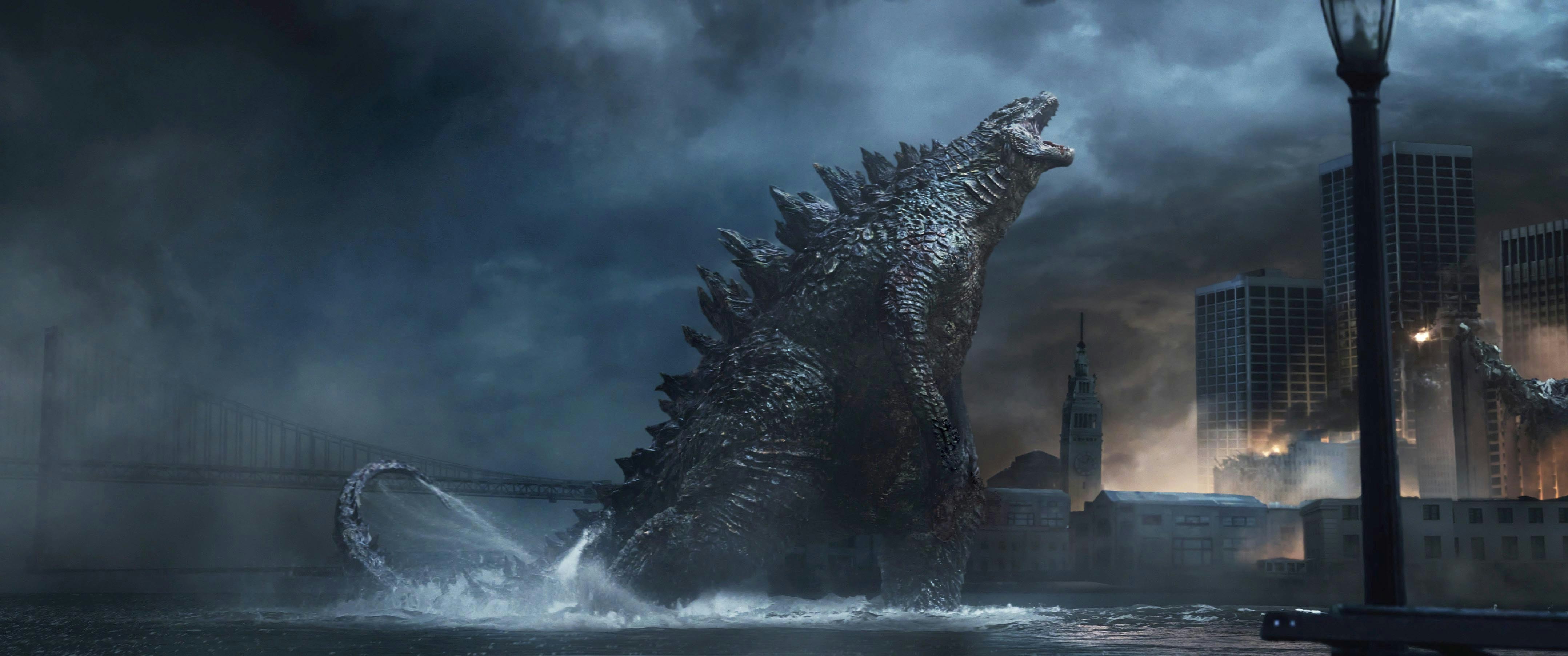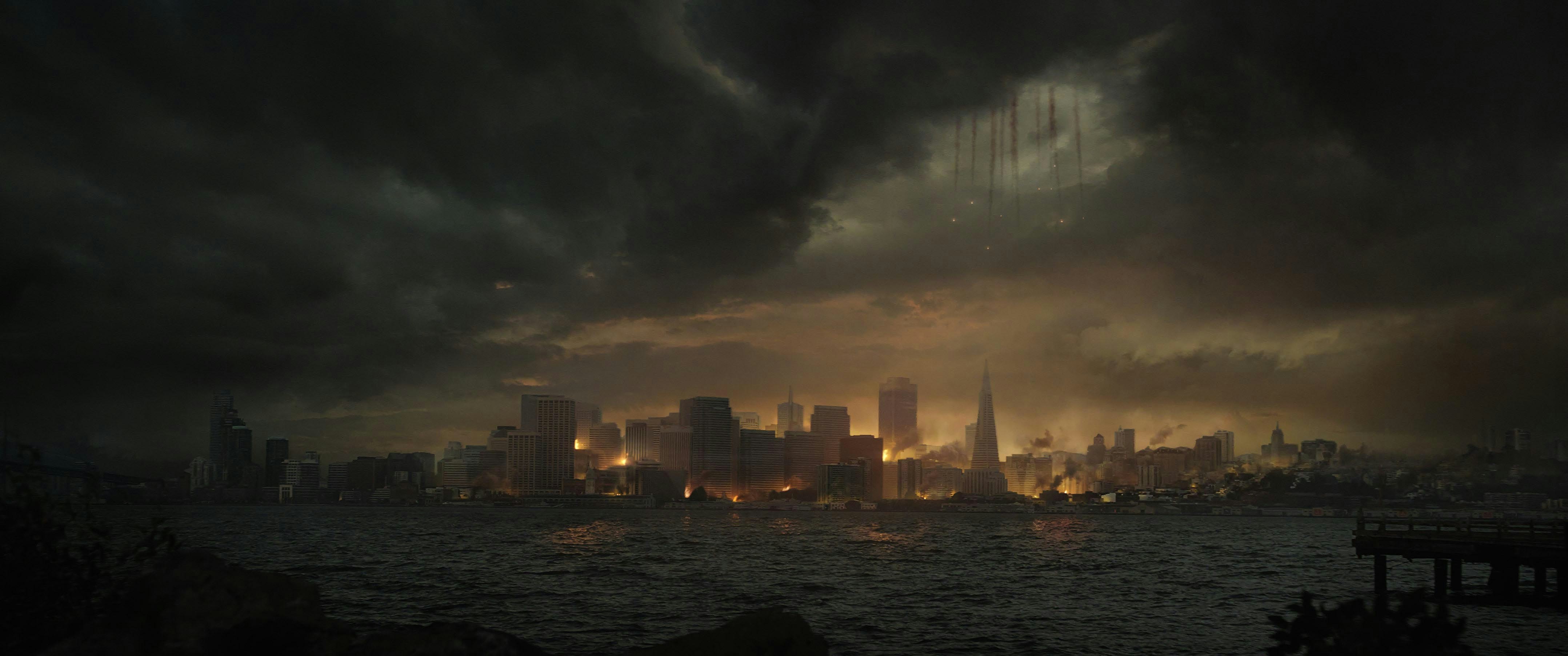
I never liked the underestimating of giant monster movies. To write the genre off as empty spectacle is, honestly, a very American way of thinking.
By now we should know that Godzilla, birthed in Ishirō Honda’s Gojira (1954), is an avatar of the atomic age. Released nine years after Japan was on the receiving end of the first and only use of nuclear weapons in warfare, Godzilla rose from the sea, cloaked in smoky shadows with scaly skin that intentionally echoed the keloid scars on survivors of Hiroshima. Listen to the opening of Akira Ifukube’s original score and you’ll hear thumping percussions that resemble the booms of bombs exploding.
Japan’s trauma from the atom bomb is in Godzilla’s DNA. So it’s little surprise Hollywood has seen the monster in playful terms. From the limp adaptation of Gojira into Godzilla, King of the Monsters! where Raymond Burr plays a reporter with a sleepy radio voice, to the 1998 Godzilla, which dropped the monster in New York to stomp Madison Square Garden, Godzilla has been little more than an Asian import who’s more mascot than monster to American eyes. (To be fair, Japan has affectionately crowned Godzilla in the same way, too.)
But in 2014, British filmmaker Gareth Edwards found the startlingly perfect middle ground between national horror and blockbuster spectacle. While his lavishly-produced Hollywood film lacks the political bite of both the 1954 original Gojira and 2016 stand-alone Shin Godzilla from Hideaki Anno, Edwards’ Godzilla is a handsome, if flawed, movie with admirably restrained sensibilities and a remarkably refreshing take on the kaiju genre. It is also the movie you need to stream on HBO Max before it leaves on April 15.
WHAT’S YOUR FAVORITE TIME-TRAVEL MOVIE? Click here to help us rank all the ones on Netflix.
Staying true to Godzilla’s atomic origins, Edwards’ Godzilla begins with an unsubtle echo of a more recent Japanese crisis, the 2011 Fukushima meltdown. The camera follows an American couple — played by Juliette Binoche and Bryan Cranston — who in 1999 work at a nuclear plant in Janjira that is at the center of unusual seismic activity. Very quickly, the tremor breaches the entire reactor, forcing an evacuation of the area.
Fifteen years later, the couple’s now-adult son, Ford (Aaron Taylor-Johnson), is a bomb diffuser for the U.S. Navy and with a family of his own. (In a fun bit of trivia: Elizabeth Olsen co-stars in Godzilla as his wife. The two played siblings in Avengers: Age of Ultron, released a year later.) While back in Japan to bail his father out of jail, the surreal activity returns. This time, it’s the awakening of monsters who’ve spent centuries feeding off nuclear energy. One monster rises from the pack: Godzilla, believed by Dr. Ishirō Serizawa (Ken Watanabe) of the secretive Project Monarch to be the great equalizer.
What Edwards does impressively with Godzilla is find a new dimension for the kaiju genre. Godzilla grounds the monsters deep in history; an exposition dump indicates these kaiju are native to Earth but billions of years old, when Earth was completely radiated. Such age and mystery lend this interpretation of Godzilla the undertones of H.P. Lovecraft, the (awfully racist) 20th-century American horror writer whose imagination was made up of ancient monsters we modern humans lack the capacity to fathom. Upon sight of monsters like his most famous creation, Cthulhu, we would go insane.

This is how Edwards sees the monsters in Godzilla. Short of any of the characters going mad (a trope in Lovecraft’s tales), Edwards unearths the terror that is bearing witness to oversized beasts who operate on instinct. We are but ants to kaiju, and from our vulnerable perspective as ants, seeing these monsters is to stare into the cosmic abyss.
Cosmic horror is all about something more powerful and more foreboding that not only reminds us of our futility but our inconsequence. This is made obvious in one of Godzilla’s direct homages to another sci-fi classic: Stanley Kubrick’s 2001: A Space Odyssey from 1970. In what is one of the more awe-inspiring visuals of 21st century Hollywood, Taylor-Johnson’s Ford participates in a HALO jump, to mark the film’s third act, dropping into the brawl of Godzilla and two kaiju in San Francisco. (The monsters level Little Tokyo, an obvious nod to the franchise’s Japanese heritage. In a poetic way, the monster has similarly fully immigrated to the West.) Scored to György Ligeti’s eerie “Kyrie” section of his 1963-65 composition Requiem — famously used by Kubrick in 2001 to communicate terror in deep space — Edwards accomplishes a similarly unnerving portrait of what it’s like to see a monster like Godzilla.
Set in scenic twilight, the HALO jumpers — visible by the red flare lights in their boots — zip past a lightning storm, which intermittently illuminates the monsters. From Ford’s falling view, encircled by his military goggles and punctuated by heavy breathing, the sheer size of Godzilla is apparent. He grows bigger as Ford speeds to the ground below. Watching this scene always makes me think of what it must be like to enter hell itself.

Godzilla naturally traffics in the type of explosive visuals that, in 2014, were prevalent thanks to Michael Bay’s Transformers and the then-rising Marvel Cinematic Universe. But there’s a darkness here that’s absent elsewhere, including in this movie’s own lesser sequels (2019’s Godzilla: King of the Monsters and 2021’s Godzilla vs. Kong). Of course, there is typical Hollywood maximalism present, particularly in the monster’s unusual beefy physique. (Until Shin Godzilla in 2016, this iteration was the largest Godzilla ever stood at 108 meters tall.)
But the monster’s limited presence is indicative of a minimalism more careless filmmakers wouldn’t think to consider. Godzilla’s screen time clocks in at under twenty minutes, which fosters both anticipation and fear in equal measure. It’s reminiscent of Jaws, where Steven Spielberg was forced to cut screen time of the shark due to technical problems. That the shark wasn’t always there, but could be, gave the film its most defining impression. Godzilla isn’t quite the classic Jaws is (nor can Godzilla just disappear in the way a shark can vanish for a boat floating in the vast sea). But the application of the same principle creates a similar artistic result.
Movie monsters have always epitomized the nightmares of a nation. When King Kong splashed in 1933 it was in the thick of the Great Depression, when audiences felt enraged enough to tear the establishment around them. In the aftermath of 9/11, Cloverfield mimicked the vérité style of CNN and YouTube that evoked conflicts in Afghanistan and Iraq. Despite Japan formalizing the kaiju genre with many different monsters, the one that’s always stood at the top has been Godzilla. Though the 2014 film sees him through Hollywood’s foreign eyes, his presence is no less menacing and otherworldly. Long live the king.
Godzilla is streaming now on HBO Max until April 15.







